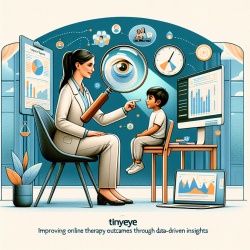Introduction
In the realm of occupational health and safety (OHS), the perspectives of immigrant workers offer invaluable insights that can enhance workplace safety protocols. A recent study titled "Highly Educated Immigrant Workers’ Perspectives of Occupational Health and Safety and Work Conditions That Challenge Work Safety" delves into the challenges faced by immigrant workers in understanding and implementing OHS practices. This blog aims to explore how practitioners, especially those involved in speech language pathology and related fields, can leverage these insights to improve their skills and outcomes for children in educational settings.
Understanding the Study
The study involved 42 highly educated immigrant workers from various industries in Canada. It revealed that despite their qualifications, these workers often have an incomplete understanding of OHS due to inadequate training and support. The research highlights key themes such as the lack of power in the workplace, poor job training, and a deficient safety culture that impede the acquisition of OHS knowledge.
Implications for Practitioners
Practitioners in speech language pathology and other educational fields can draw parallels between the challenges faced by immigrant workers and those encountered in school settings. Here are some actionable insights:
- Enhanced Training Programs: Just as immigrant workers benefit from comprehensive OHS training, practitioners can improve their skills through targeted professional development programs that emphasize safety and effective communication.
- Creating Supportive Environments: The study underscores the importance of supportive workplace environments. Practitioners should strive to create inclusive and supportive educational settings that foster open communication and empower children to express their needs.
- Data-Driven Decision Making: Utilizing data to identify gaps in training and support can lead to more effective interventions. Practitioners can apply data-driven approaches to assess the impact of their strategies and make informed decisions to enhance educational outcomes.
Encouraging Further Research
The study opens avenues for further research into the intersection of occupational safety and educational practices. Practitioners are encouraged to explore how insights from OHS can be applied to improve safety and communication in schools. Collaborative research efforts can lead to innovative solutions that benefit both immigrant workers and students.
Conclusion
By understanding the challenges faced by immigrant workers in occupational health and safety, practitioners can enhance their skills and create better outcomes for children in educational settings. Embracing data-driven decisions and fostering supportive environments are key steps toward achieving this goal.
To read the original research paper, please follow this link: Highly Educated Immigrant Workers’ Perspectives of Occupational Health and Safety and Work Conditions That Challenge Work Safety.










